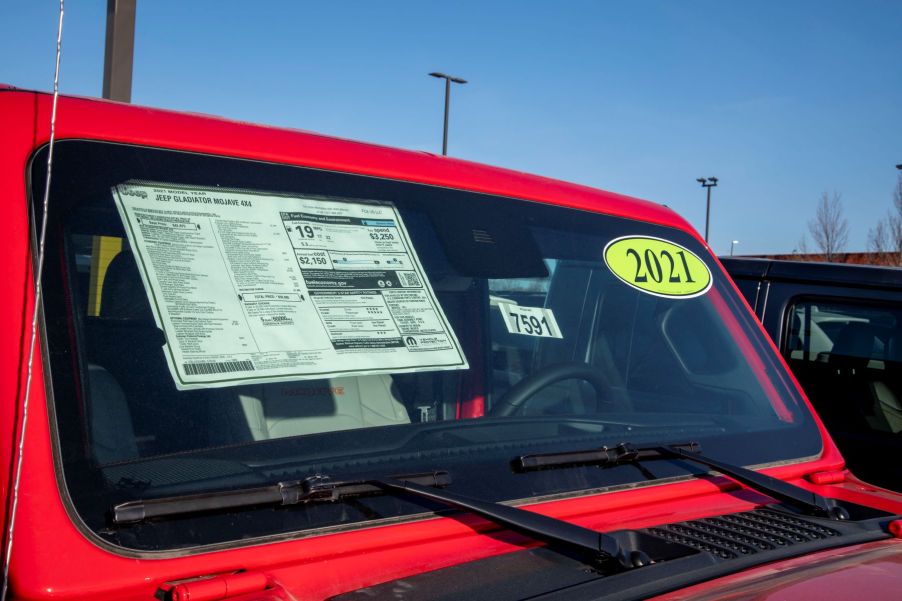
Who Is in Charge With Coming up With MSRP?
Most of us are familiar with the term MSRP. It stands for the manufacturer’s suggested retail price. However, do you know what that means in a way that could help you negotiate for a better price the next time you go car buying? Today, we will cover exactly what an MSRP is and who determines them. We’ll also learn if dealers have to abide by that MSRP on all occasions.
What exactly is a vehicle’s MSRP?

According to consumer site Credit Karma, it’s important to know the MSRP before you shop for a new vehicle. To some, it’s still sometimes known as a “sticker price.” It’s required by federal law that the MSRP be displayed clearly on the vehicle’s window.
The MSRP is the price an automaker like Ford or Chevrolet suggests the dealer ask for when selling the vehicle to consumers. The figure doesn’t include optional features, add-ons, and other costs that can push the price up above the MSRP. It’s important for the consumer to know that the MSRP is an estimate that covers most of the cost of that new vehicle.
However, an MSRP is not the final selling price, and it doesn’t cover every possible cost. Additionally, the dealer isn’t bound by that price in any way.
How dealer markups work
Since there’s a suggested MSRP and dealers don’t have to abide by it, you should try to negotiate the price of any vehicle you’re considering for purchase. Bargaining with salespeople is something many of us would prefer to avoid. However, a vehicle is one of the biggest investments we make. It’s hardly worth paying a lot more for a vehicle because negotiation can be an uncomfortable zone. As Credit Karma points out, MSRP is a suggested price. Since that’s true, the dealer can suggest you pay more, and you can bargain for less.
When looking at the cost breakdown of a vehicle, keep in mind that several of those numbers can be negotiated. According to the Federal Trade Commission, the dealer might be willing to lower the price to the point significantly by negotiation, perhaps as much as 10% to 20% less than the MSRP.
Additionally, believe it or not, it’s not that uncommon for a dealer to ask for less than a vehicle’s MSRP. Much can depend on the wholesale cost of the car and how badly the dealer needs to get rid of it to make room for newer models.
Lastly, be aware there are times that a dealer is far less likely to negotiate on the MSRP. If you’re got your eye on a newly released vehicle in high demand, the dealer isn’t likely to bargain because they don’t have to. Still, you won’t know if you don’t ask.
What items aren’t included in the MSRP?
The MSRP lets you know the price the dealer would like to get for a given vehicle. It’s not, however, the only term you need to be familiar with when negotiating a price at a dealership. It’s also important to understand other key terms ahead of time like destination charges, invoice prices, and registration fees.
The destination charge is how much it cost for the dealer to transport the vehicle from the manufacturer. It’s a cost they are very willing to pass along to the consumer, and it’s sometimes called a freight charge.
The total price the manufacturer charges the dealer for the vehicle is the invoice price. Usually, that price includes the destination charges for that vehicle.
Registration fees are what you’ll have to pay to own a car in your geographic location and are largely determined by the state you live in.
Doing your homework and knowing the lingo before you arrive at the dealer will better prepare you to confidently negotiate a better price for the vehicle you want and need.


